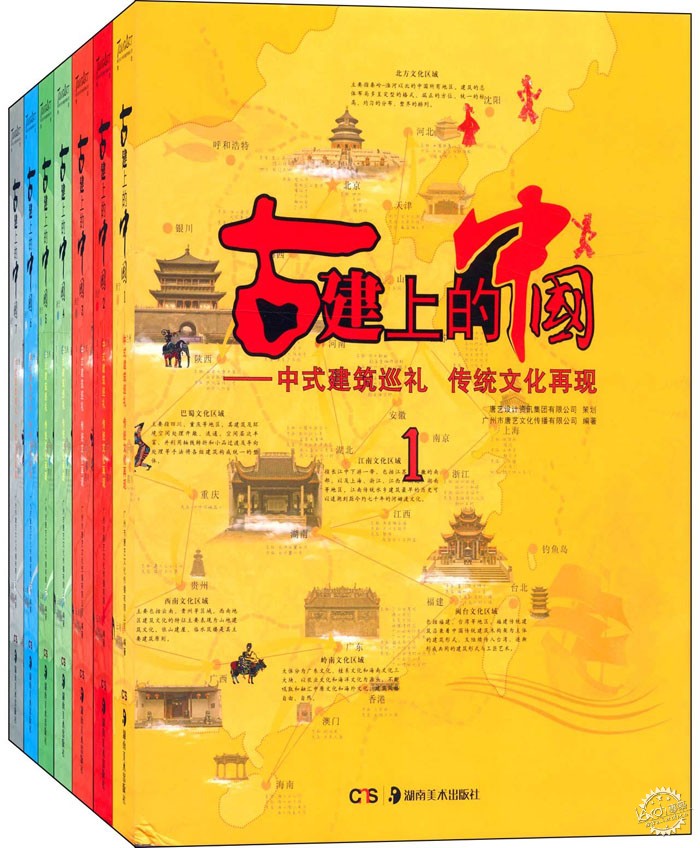
特色推荐
Summary
本套图书集中国古代建筑之大成,全书按建筑文化区域作为大类,建筑细部作为细分,是对中式古建筑的一次精密梳理归纳,具有广泛、权威、典藏、品鉴的特点。
本书共七本一套,从全国各地选取了近200个中国古代建筑项目,所有实景均为摄影师走遍中国实地拍摄得来,辐射范围之广远甚于同类的其他书籍。我们不仅仅是将北京、天津、河北、河南、山东、山西、陕西、上海、安徽、浙江、江苏、湖北、湖南、江西、四川、重庆、云南、贵州、广东、广西、福建、海南、香港、澳门等地的古建筑细部进行实景呈现。在全面展示中国各个文化区域里不同古建筑类型的建筑样式、材料运用、细部构造和设计特色同时,也为读者做了一次较为完整的中式建筑巡礼,更重要的是,这样一次巡礼深入地再现了中国不同区域的传统文化。对于读者和设计师而言,了解建筑细部和结构的设计固然利于借鉴,但对建筑背后的文化能够有更加深入地了解,将文化的脉络溶进自己的作品思想里,却无疑对作品的成功有更为积极的作用,对于中国现代建筑的发展亦有不可忽视的推动意义!
With seven books in a set, it includes about 200 archaic Chinese buildings. All real images were taken on site by photographers travelling across the country. The coverage is much broader than other books in its kind. Details of archaic Chinese buildings across the country are not only presented by images as how they look on site, but also by texts to give an all-round description about archaic Chinese buildings as well as culture behind them. That helps readers look deeper into the designs. This book gives a full display of various archaic Chinese buildings across China in terms of styles, materials, detailed structure and designing features. Reading it is like taking an exploratory journey into Chinese architecture, which recaptures traditions of regions where the projects are located. For architects, deep understanding about culture that buildings are based on helps blend culture context into their works. That generates positive impact on the development of modern Chinese architecture.
项 目 介 绍
Introduction
细部名称
整体
入口(整体、门檐、大门、基座、院墙)
庭院(整体、垂花门、铺地、月洞门、巷道、其他)
屋顶(整体、屋脊、山墙、屋檐)
屋身(整体、斗拱、雀替、彩画、门头、门、窗、墙、柱子、栏杆、雕饰、走廊)
地基(柱顶石、踏跺、须弥座、栏杆、月台)
室内空间(天花、厅堂、墙、楼梯、隔断、回廊、铺地、柱子)
建筑小品(亭、廊、桥、角楼、华表、影壁、牌坊、雕塑、路牌、其他)
Details
Overall
Entrances (Overall, Lintels, Gates, Pedestals, Courtyard Walls)
Courtyards (Overall, Festooned Doors, Pavage, Moon Gates, Alleys, Others)
Roofs (Overall, Roof Ridges, Gables, Eaves)
Main Bodies (Overall, Dou Gongs, Decorated Brackets, Color Paintings, Door Heads, Doors, Windows, Walls, Pillars, Railings, Carving Decorations, Hallways)
Foundations (Dosserets, Flight of Steps, Sumeru Thrones, Railings, Platforms)
Interior Spaces (Ceilings, Halls, Walls, Stairs, Partitions, Verandas, Paving, Pillars)
Architectural Pieces (Bowers, Roofed Promenades, Bridges, Turrets, Marble Cloud Pillars, Screen-walls, Chinese Archways, Sculptures, Guiding Signs, Others)
北方文化区域
Northern Region
居住建筑
民居
山西汾西师家沟民居
山西襄汾丁家村民居
山西平遥古城之民居
陕西韩城党家村民居
北京帽儿胡同
大院
山西太谷曹家大院
山西祁县乔家大院
山西祁县渠家大院
天津石家大院
山东曲阜孔府
山东临沂庄氏庄园
河南巩义康百万庄园
Residential Buildings
Folk Houses
The Shi’s Village Houses, Fenxi County, Shanxi Province
The Ding’s Village Houses, Xiangfen County, Shanxi Province
Folk Houses of Pingyao Town, Shanxi Province
The Dang’s Village Houses, Hancheng, Shaanxi Province
Maoer Alley, Beijing
Courtyard Dwellings
The Cao’s Courtyard Dwelling, Taigu County, Shanxi Province
The Qiao’s Courtyard Dwelling, Qi County, Shanxi Province
The Qu’s Courtyard Dwelling, Qi County, Shanxi Province
The Shi’s Courtyard Dwelling, Tianjin
Confucian Mansion, Qufu, Shandong Province
The Zhuang’s Manor, Linyi, Shandong Province
Kang Baiwan Manor, Gongyi, Henan Province
城市公共建筑
钟楼
河北正定开元寺之唐代钟楼
鼓楼
陕西西安鼓楼
古城楼
山西平遥古城之街道、城池、门楼、牌楼
街
北京前门大街
北京颐和园苏州街
天津古文化街
书院
河南登封嵩阳书院
Public Buildings
Bell Towers
Bell Tower of Kaiyuan Temple, Zhengding County, Hebei Province
Drum Towers
Xi’an Drum Tower, Xi’an, Shaanxi Province
City Gate Towers
Streets, Gate Towers, Archways of Pingyao Town, Shanxi Province
Streets
Qianmen Avenue, Beijing
Suzhou Street, The Summer Palace, Beijing
Ancient Culture Street, Tianjin
Academies
Songyang Academy, Dengfeng, Henan Province
皇家建筑
宫殿
河北承德行宫
北京故宫
王府
北京恭王府
县衙
山西平遥古城之县衙
Imperial Architecture
Palaces
Chengde Palace, Chengde, Hebei Province
The Forbidden City, Beijing
Mansions of Princes
Mansion of Prince Gong, Beijing
Courthouses (Yamens)
Pingyao Yamen, Shanxi Province
宗教建筑
寺
北京雍和宫
北京广济寺
北京广化寺
北京潭柘寺
北京圆明园正觉寺
北京智化寺
北京颐和园佛香阁
天津蓟县独乐寺
山西大同善化寺
山西大同昊天寺
山西大同华严寺
山西恒山悬空寺
河北承德普乐寺、普宁寺
河北正定开元寺
河北正定隆兴寺
河北井陉苍岩山桥楼殿
陕西扶风法门寺
河南开封大相国寺
河南登封嵩山少林寺
河南登封法王寺
河南洛阳白马寺
塔
北京潭柘寺之塔
陕西扶风法门寺之塔
河北承德避暑山庄之塔
河北承德普乐寺、普宁寺之塔
河北正定开元寺之广慧寺华塔
河北正定开元寺之唐代雁塔(须弥塔)
河南登封法王寺之塔
河南登封嵩山少林寺之塔
天津蓟县独乐寺、白塔寺之塔
山西应县木塔
道观
陕西西安八仙宫
山西平遥古城之清虚观
Religious Buildings
Buddhist Temples
Yonghe Lamasery
Guangji Temple, Beijing
Guanghua Temple, Beijing
Tantuo Temple, Beijing
Zhengjue Temple, The Summer Palace, Beijing
Zhihua Temple, Beijing
Foxiang Court, The Summer Palace, Beijing
Dule Temple, Jixian County, Tianjin
Shanhua Temple, Datong, Shanxi Province
Haotian Temple, Datong, Shanxi Province
Huayan Temple, Datong, Shanxi Province
Xuankong Temple, Hengshan Mountain, Shanxi Province
Pule Temple, Puning Temple, Chengde, Hebei Province
Kaiyuan Temple, Zhengding County, Hebei Province
Longxing Temple, Zhengding County, Hebei Province
Yanshanqiao Hall, Jingxing County, Hebei Province
Famen Temple, Fufeng County, Shaanxi Province
Xiangguo Temple, Kaifeng, Henan Province
Shaolin Temple, Songshan Mountain, Dengfeng, Henan Province
Fawang Temple, Dengfeng, Henan Province
Baima Temple, Luoyang, Henan Province
Pagodas
Pagoda of Tantuo Temple, Beijing
Pagoda of Famen Temple, Fufeng County, Shaanxi Province
Pagoda of The Summer Resort, Chengde
Pagoda of Pule Temple, Puning Temple, Chengde, Hebei Province
Duobao Pagoda of Kaiyuan Temple, Zhengding County, Hebei Province
Yanta Tower of Kaiyuan Temple, Zhengding County, Hebei Province
Pagoda of Fawang Temple, Dengfeng, Henan Province
Pagoda of Shaolin Temple, Songshan Mountain, Dengfeng, Henan Province
Pagodas of Dule Temple, Baita Temple, Jixian County, Tianjin
Yingxian Timber Pagoda, Yingxian County, Shanxi Province
Taoist Temples
The Eight Immortals Taoist Temple, Xi’an, Shaanxi Province
Qingxu Taoist Temple of Pingyao Town, Shanxi Province
祠祀建筑
坛
北京地坛
北京天坛
庙
河北正定文庙大成殿
北京什刹海火德真君庙、万宁桥、烟袋斜街
山西平遥古城之城隍庙
山西平遥古城之文庙
山东曲阜孔庙
山东曲阜周公庙
Ritual Buildings
Alters
Altar of the Earth, Beijing
Altar of the Heaven, Beijing
Shrines
Confucian Temple, Zhengding County, Hebei Province
Huode Zhenjun Temple, Beijing
Town God’s Temple of Pingyao Town, Shanxi Province
Confucian Temple of Pingyao Town, Shanxi Province
Confucian Shrine, Qufu, Shandong Province
Zhou Gong Shrine, Qufu, Shandong Province
园林建筑
皇家园林
北京颐和园
河北承德避暑山庄
Landscape Architecture
Imperial Gardens
The Summer Palace, Beijing
The Mountain Resort, Chengde, Hebei Province
巴蜀文化区域
Sichuan Region
居住建筑
民居
四川江安夕佳山民居
重庆双江杨氏旧居
寨
四川甘孜丹巴甲居藏寨
四川理县桃坪羌寨
古镇
四川自贡仙市古镇
四川洛带古镇
四川宜宾李庄古镇
重庆沙坪坝磁器口古镇
Residential Buildings
Folk Houses
Xijiashan Folk Houses, Jiangan County, Sichuan Province
Yang’s Former Residence, Shuangjiang Town, Chongqing
Stockades
Bajiaju Tibetan Stockade, Danba County, Ganzi Autonomous Prefectures, Sichuan Province
Qiang Stockade, Taoping County, Sichuan Province
Ancient Towns
Xianshi Town, Zigong, Sichuan Province
Luodai Town, Sichuan Province
Lizhuang Town, Yibin, Sichuan Province
Ciqikou Town, Shapingba District, Chongqing
城市公共建筑
古城楼
四川阆中古城
Public Buildings
City Gate Towers
Langzhong City Towers, Sichuan Province
宗教建筑
寺
四川成都文殊院
四川峨眉山报国寺
重庆沙坪坝宝轮寺
道观
四川成都青羊宫
Religious Buildings
Buddhist Temples
Wenshu Monastery, Chengdu, Sichuan Province
Baoguo Temple, Emei Mountain, Sichuan Province
Baolun Temple, Shapingba, District, Chongqing
Taoist Temples
Qingyang Taoist Temple, Chengdu, Sichuan Province
园林建筑
私家园林
四川安仁刘氏庄园
Landscape Architecture
Private Gardens
Liu’s Manor, Anren Town, Sichuan Province
精 彩 文 摘
Digest
北方文化区域
北方文化区域即秦岭—淮河以北的中国所有地区。其聚落集中,总体的古建筑特征是:房屋墙体较厚,有院落,防风保暖。皇家园林建筑以红黄为主色调,既显示出皇权的尊容富贵,又与宽阔整齐的地形、多蓝天白云的气候特点相互辉映。
受地理环境和气候的影响,建筑的特点是:在淮河以北至黑龙江以南的广大平原地区,组群方整规则,庭院较大,但尺度合宜;建筑造型起伏不大,屋身低平,屋顶曲线平缓;多用砖瓦,木结构用料较大,装修比较简单。总的风格是开朗大度;黄河以西至甘肃、宁夏的黄土高原地区,院落的封闭性很强,屋身低矮,屋顶坡度低缓,还有相当多的建筑使用平顶,很少使用砖瓦,多用土坯或夯土墙,木装修更简单。总的风格是质朴敦厚,但在回族聚居地建有许多清真寺,它们体量高大,屋顶陡峻,装修华丽,色彩浓重,与一般民间建筑有明显的不同。
在庭院上的差别,华北地区住宅庭院较方阔,有利于冬季多纳阳光;东北的院落更加宽大;稍南的晋、陕、豫等省,夏季西晒严重,院子变得窄长;西北地区风沙很大,院墙加高,谓之庄窠。因此,黄河中上游地区多窑洞式住宅。
北方文化区域传统的建筑类型有:居住建筑、城市公共建筑、皇家建筑、宗教建筑、宗祠建筑和园林建筑等。每一种类型的建筑都因北方的地理环境和气候而显示出了在相同文化背景下的不同细部构造特色。
Northern Region
Northern region refer to areas on the north of Qinling Mountains-Huaihe River Line in China. The ancient buildings there have courtyards and thick walls to resist strong winds and keep the buildings warm.
In the regions on the north of Huaihe River and the south of Heilongjinag River, residential complexes have regular configuration with large courtyards. Their main bodies are low and even, covered by gently sloping roofs of tiles and bricks. Buildings on the Loess Plateau stay in an enclosed layout. Their main bodies feature low walls made of clay bricks or rammed earth, and most of them adopt flat roofs without tiles or bricks. In habitations of the Hui nationality, there are lots of mosques, which have large volumes, steep roofs and gorgeous decorations.
Residential courtyards in North China allow more sunlight in. Those in northeastern regions are larger. In lower regions, courtyards are longer and narrower. And courtyards in northwestern regions have higher walls. On the middle and upper reaches of the Yellow River, cave residences are common.
There are residential buildings, public buildings, imperial architecture, religious buildings, ritual buildings and landscape architecture in northern region.
巴蜀文化区域
巴蜀文化是华夏文化的一个分支,是中国四川盆地中成都的蜀和重庆的巴所代表的文化。素有“天府之国”美称的四川盆地,具有异常独特的自然地理特征,四周山岳高耸、围合封闭,与外界相对隔离,但其域内河川纵横、交通便利、气候温和、土地肥美、雨量充沛、物产丰富。反映在建筑文化上,则表现为自成一格的川渝古代建筑风格特征,在中国传统建筑共性的基础上,展示着巴蜀建筑文化的强烈个性。总结起来巴蜀建筑有以下几点特征:
一、注重环境绿化和园林化。城镇、园林、寺庙、民居与山川自然环境有机融合,构成一幅幅生动的“天人合一”田园生活场景图画。二、曲轴运用。中国传统建筑布局讲究中轴对称,但在巴蜀山地条件下,这个原则运用得相当变通灵活,且有了创造性的发展,最主要的便是曲轴手法。三、巧取地形,智取空间。四、讲风水,注重相地。
另外,川渝古建筑在建筑型制、建筑形象和一些构造做法上,一方面表现出古风犹存的遗意,给人以古朴之感,另一方面,又表现出奇智巧思,富于独创的作风,给人以鼎新求异的深刻印象。比如川渝独创的一种牌楼式组合屋顶,把牌楼与常见的歇山、悬山屋顶形式相结合,利用重构的手法,形成一种丰富多彩、高低错落、轮廓变化的组合式屋顶;翼角的虾须构造也十分别致且稳固;斗拱形态丰富而浪漫,喜用P型、S型等曲线形斗拱等等。
巴蜀的建筑文化是兼收并蓄、多元融合的,不仅融合了汉族主流派的建筑文化,本地区少数民族的融合演变也投射在了建筑文化上,清末和近代欧洲古典建筑文化也对其产生了一定的影响,这反映出了巴蜀传统文化的宽容度与融合力。总之,在长期的历史发展中,川渝建筑形成了飘逸、洒脱、轻灵、薄透、素雅、质朴的建筑艺术风格。
属于这一地区的建筑类型有居住建筑、城市公共建筑、皇家建筑、宗教建筑、宗祠建筑和园林建筑等。
Sichuan Region
Sichuan region includes Chengdu and Chongqing. Praised as a land of abundance, it is characterized by very unique climate and geographical conditions. Sichuan region is a basin enclosed by mountains. Land within the basin enjoy wide spread water networks, fertile soil, abundant rainfall and rich resources. Those elements give unique style to architecture in this region on the basis of traditional Chinese style. To sum up, the features are as the follows:
Firstly, great attention was paid to greenery and landscape. Towns, gardens, temples, folk houses were blended into natural environment. Secondly, straight axis was turned into a flexible one because of diverse geographical conditions in Sichuan region. Thirdly, landforms were creatively made use of to get spaces. Fourthly, Fengshui theory and site investigation are very important.
In terms of style, image and construction, ancient buildings in Sichuan region feature archaic style with impressive innovation in design. Take the combined roof for example. It is blended with hip and gable roofs or overhanging gable roofs. Modular structures arranged in a repeating way make roof varies in color, height and shapes. Whisker-like structures are very special and firm. Dou Gong in the shape of P and S were popular.
Sichuan style architecture features an open nature to embrace other styles, including Han style architecture and evolution of minority nationality. The architecture is even impressed by Qing style and modern classical European style. In short, Sichuan style architecture is shaped with simple but elegant style in long history of development.
This region has the following architectural types: residential buildings, public buildings, ritual buildings, religious buildings, imperial architecture and landscape architecture.
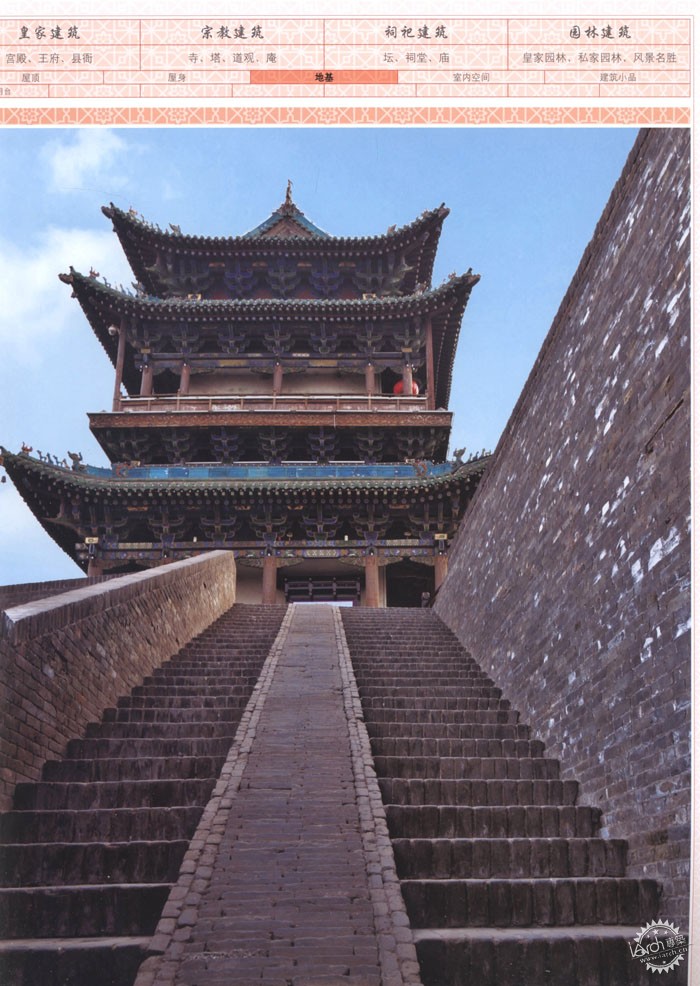
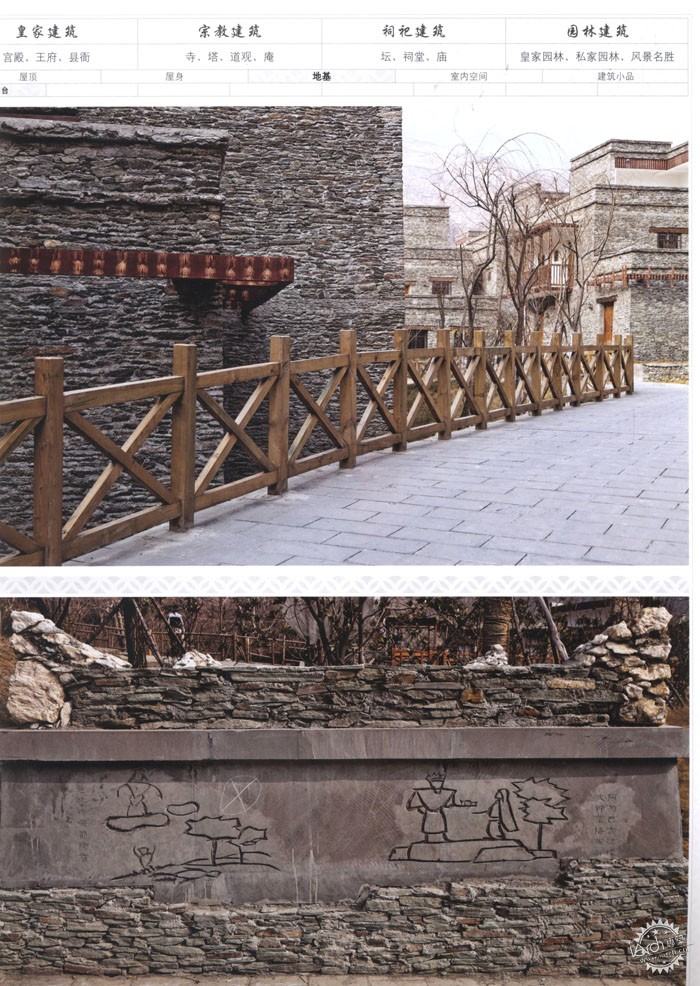
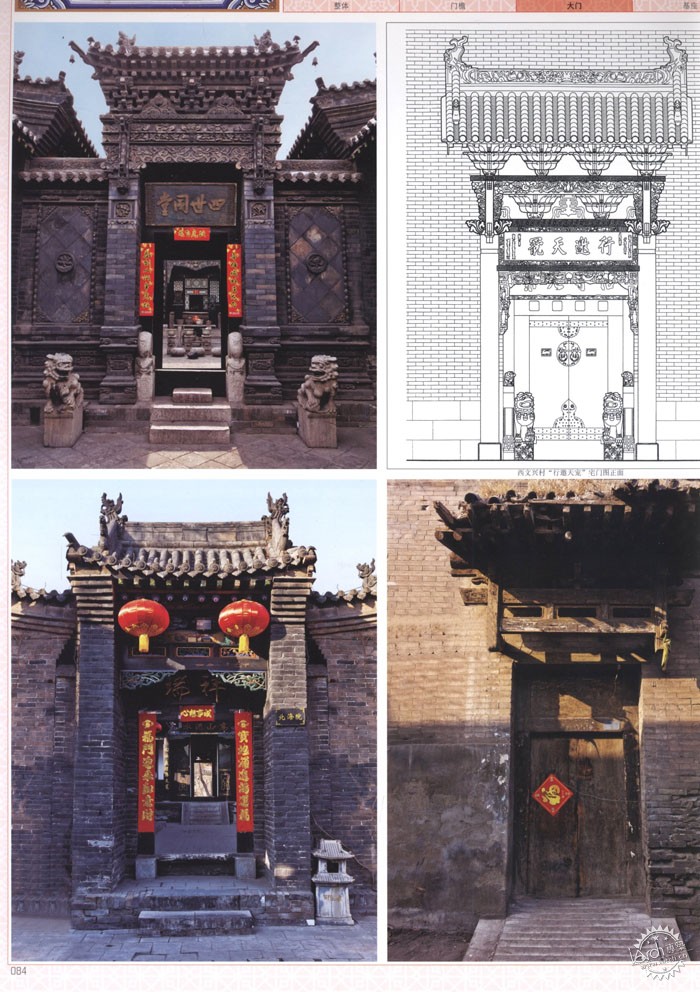
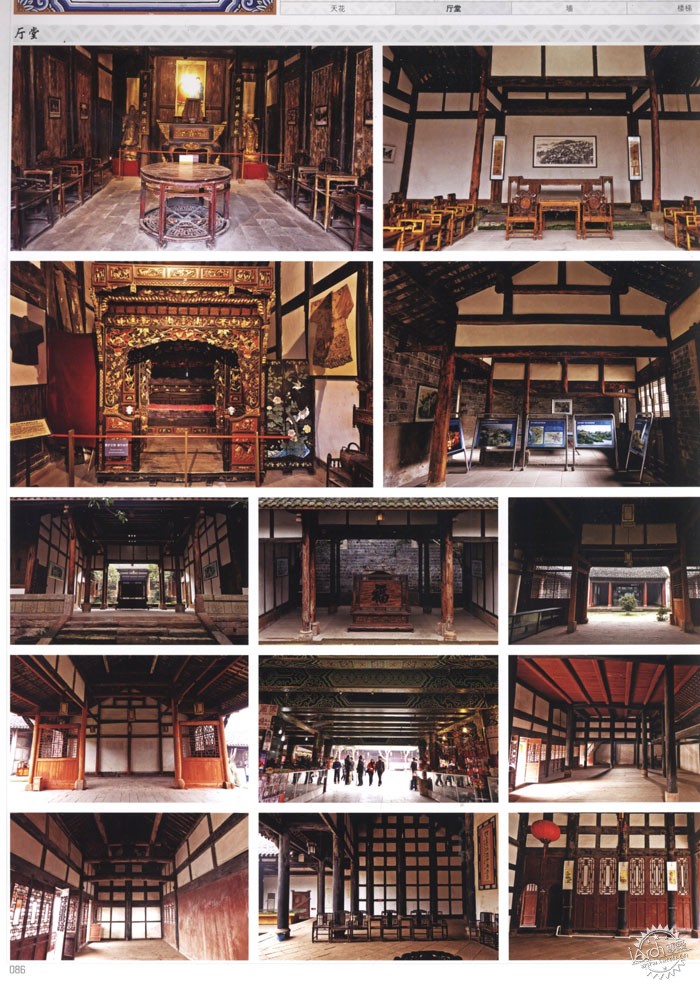
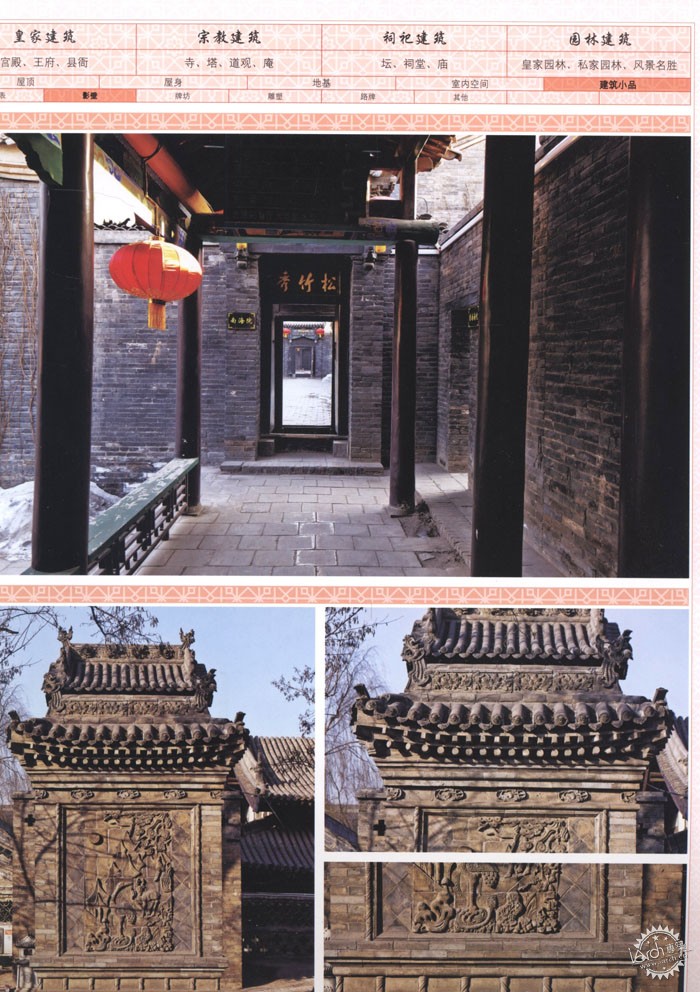
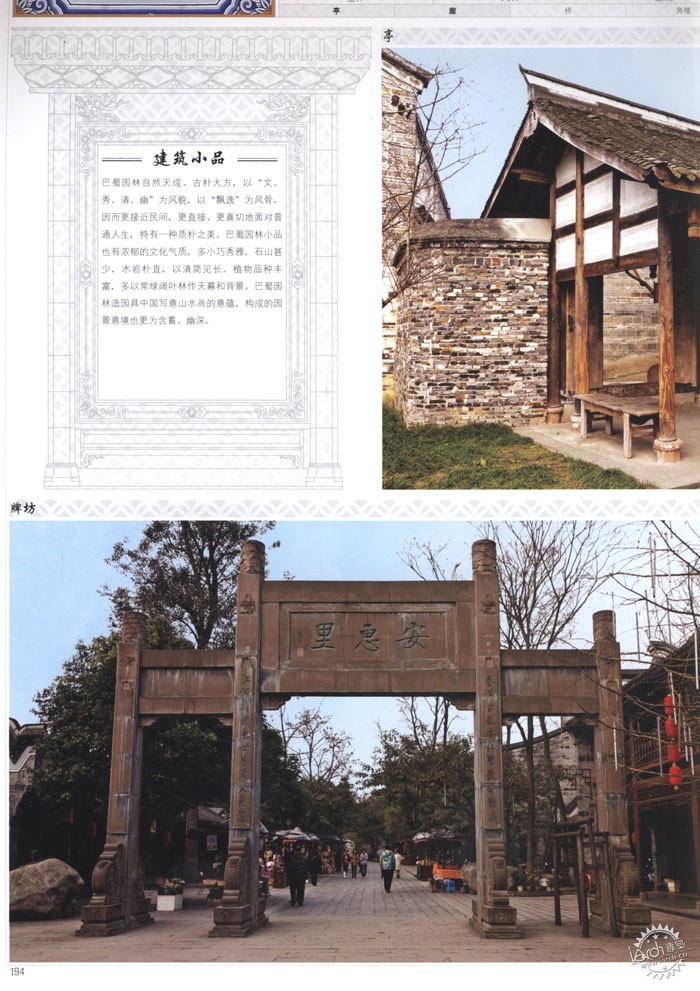
下载百度网盘链接:http://pan.baidu.com/s/1kV2bzbL |
|
